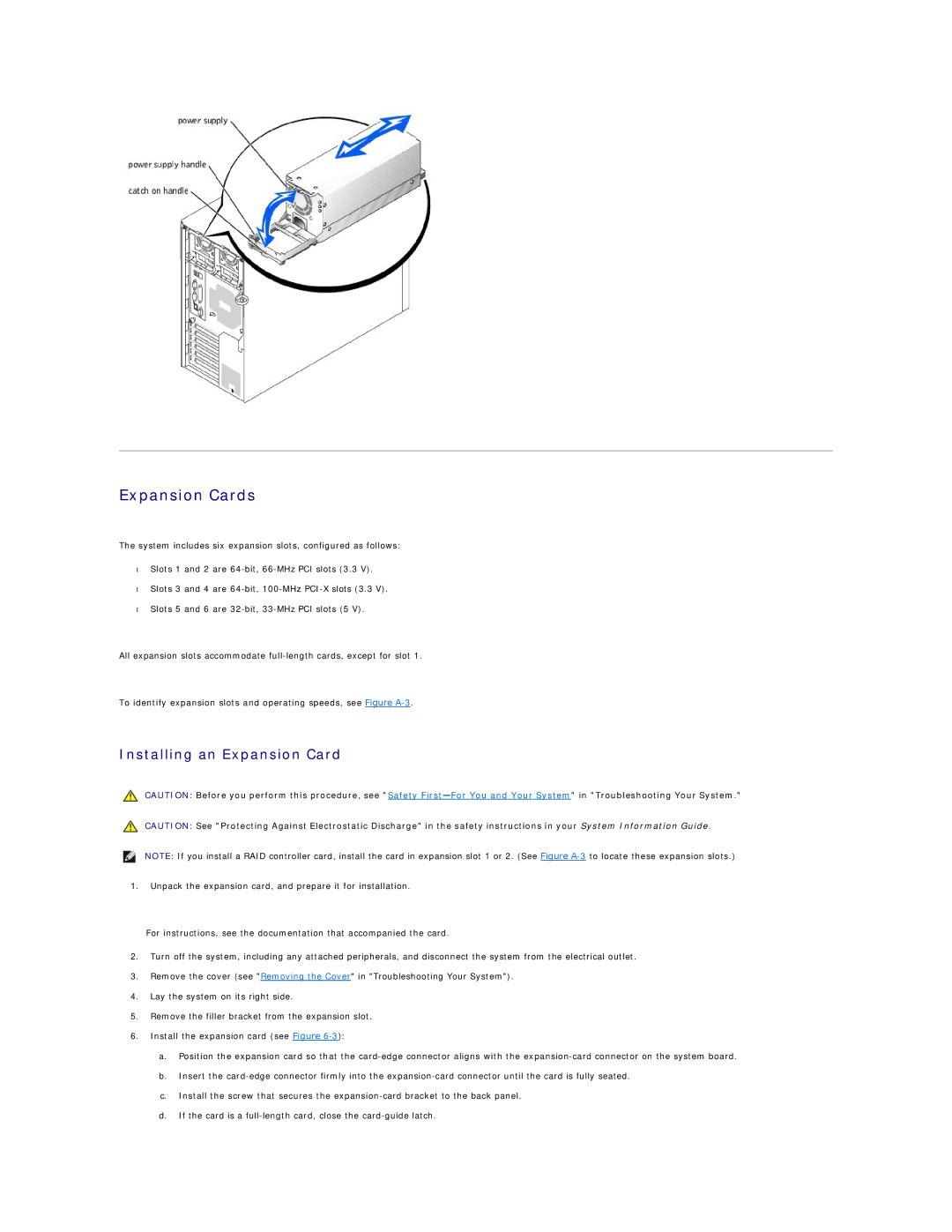
Expansion Cards
The system includes six expansion slots, configured as follows:
•Slots 1 and 2 are
•Slots 3 and 4 are
•Slots 5 and 6 are
All expansion slots accommodate
To identify expansion slots and operating speeds, see Figure
Installing an Expansion Card
CAUTION: Before you perform this procedure, see "Safety
CAUTION: See "Protecting Against Electrostatic Discharge" in the safety instructions in your System Information Guide.
NOTE: If you install a RAID controller card, install the card in expansion slot 1 or 2. (See Figure
1.Unpack the expansion card, and prepare it for installation.
For instructions, see the documentation that accompanied the card.
2.Turn off the system, including any attached peripherals, and disconnect the system from the electrical outlet.
3.Remove the cover (see "Removing the Cover" in "Troubleshooting Your System").
4.Lay the system on its right side.
5.Remove the filler bracket from the expansion slot.
6.Install the expansion card (see Figure
a.Position the expansion card so that the
b.Insert the
c.Install the screw that secures the
d.If the card is a
